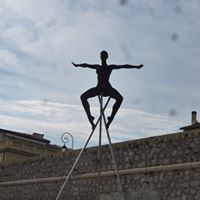Which Victorian era writer wrote the poem “The Eagle”, that begins, “He clasps the crag with crooked hands”?
The author who composed a short poem titled “The Eagle” is Alfred, Lord Tennyson (1809-1892). The first stanza begins, “He clasps the crag with crooked hand;/ Close to the sun in lonely hands,/ Ring’d with the azure world, he stands.”
Originally published in 1851, the poem describes an eagle perched watchfully above a grand landscape ready to hunt. When at last the bird spots its prey and attacks, it descends like a “thunderbolt”, a figure of awe-inspiring power evoking the mighty gods like Zeus and Thor. The second and last stanza rounds out the vivid picture for the reader- “The wrinkled sea beneath him crawls;/ He watches from his mountain walls,/And like a thunderbolt he falls.”
This poem captures a short-but-forceful appreciation of a mighty predator, marveling at the grandeur of an eagle and at its stunning speed and strength as it swoops down on its prey. The poem’s speaker has a face-to-face confrontation with the sheer awesome power of nature.
It was the mighty Pyrenees that inspired this poem which resulted from Tennyson’s sight of the great eagles circling above him as he climbed the rocks. Tennyson was part of a small group who traveled to the borders of Spain to deliver money and messages to Spanish Revolutionaries.
One of the commentaries about Tennyson states that along with Queen Victoria and Prime Minister William Gladstone, he was the third most famous living person and had a reputation no other poet writing in England has ever had.
More Info:
en.m.wikipedia.org


